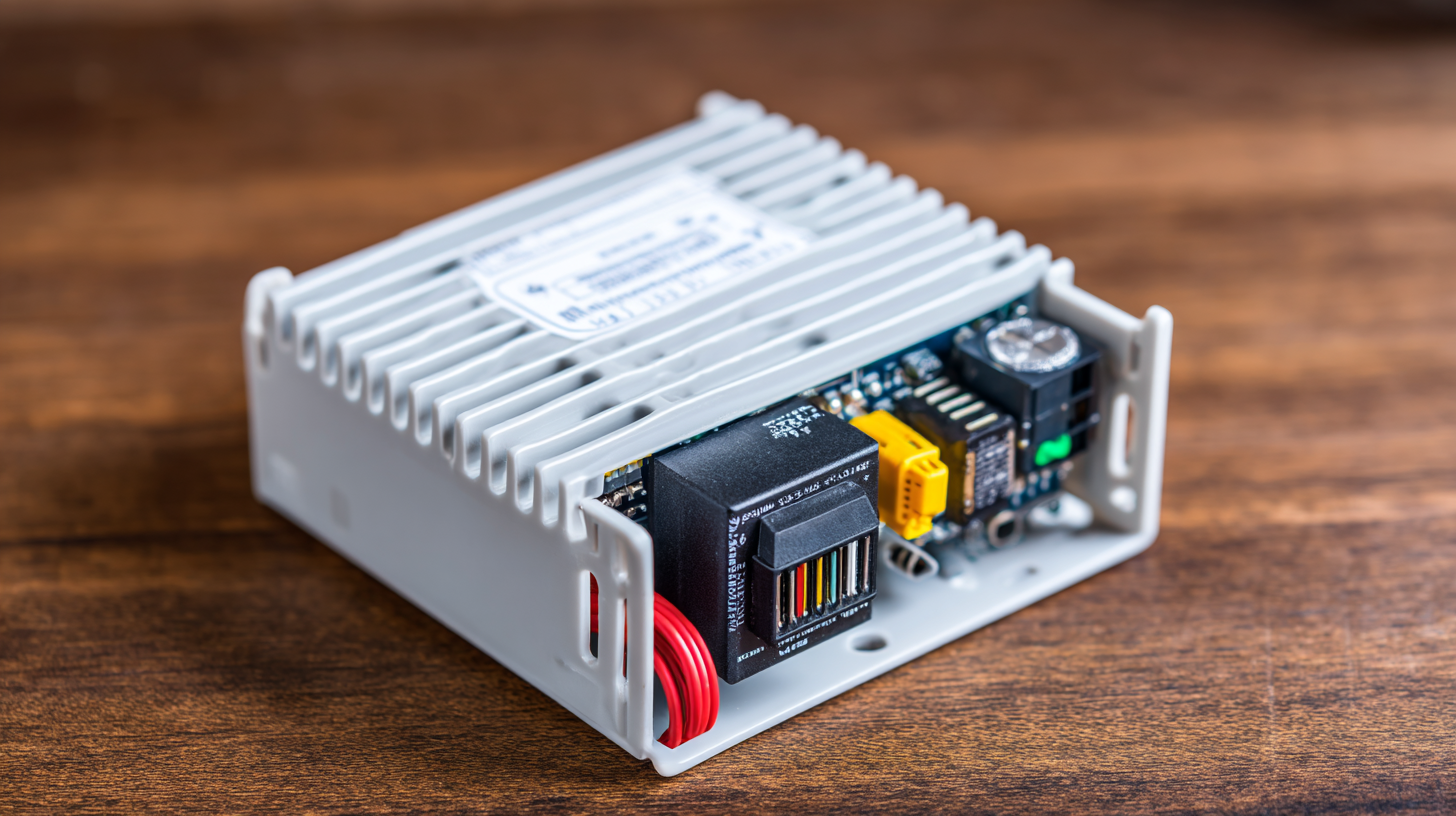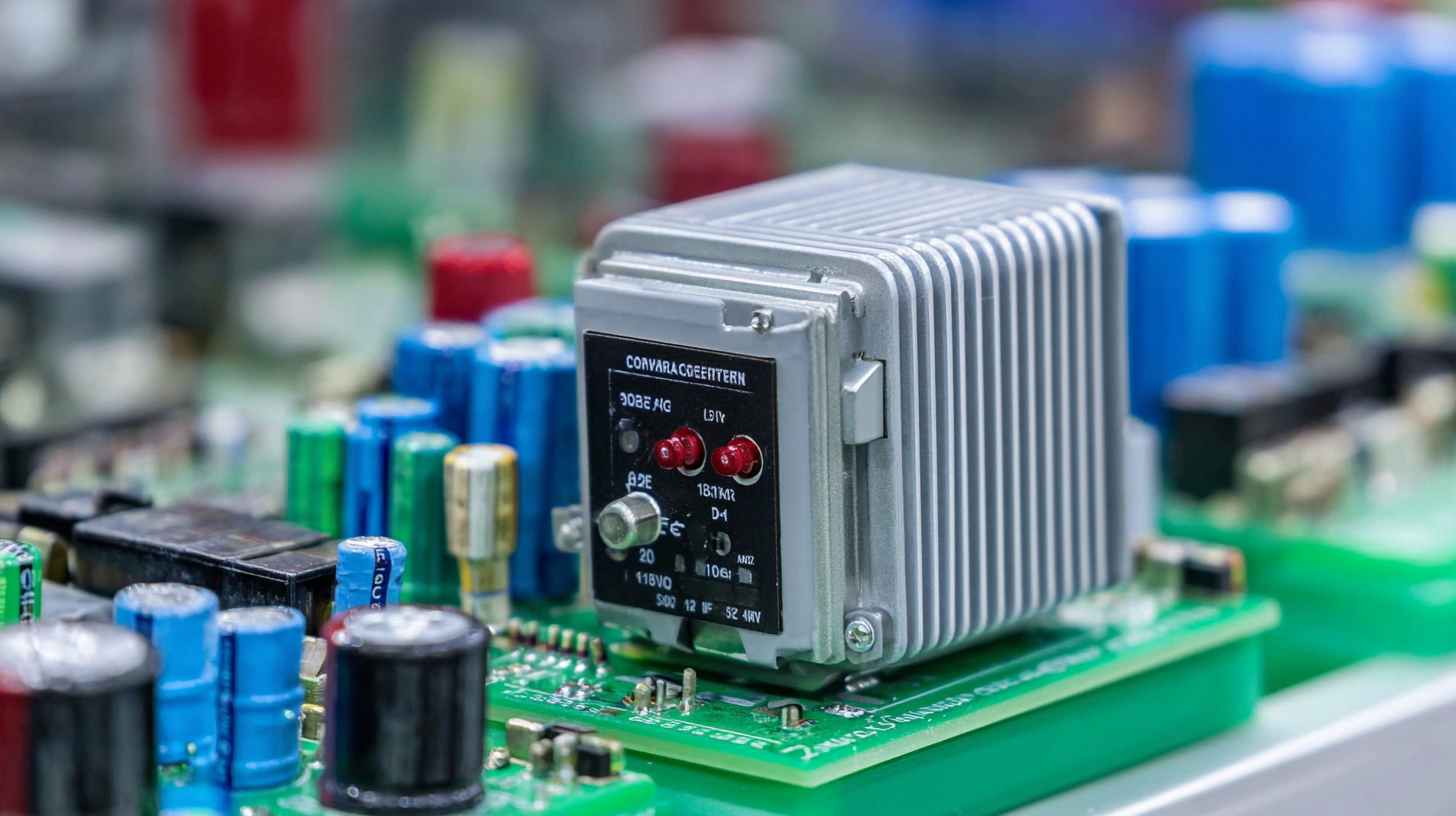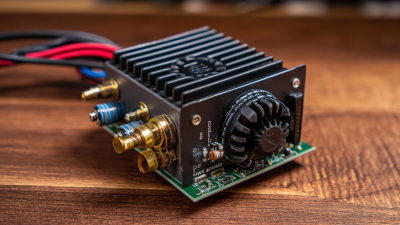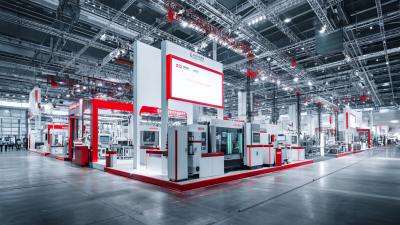Understanding DC to AC Converters: Key Specs and Trends Shaping the Industry in 2023
In 2023, the landscape of power conversion technologies is rapidly evolving, with dc to ac converters playing a pivotal role in various applications, from renewable energy systems to portable electronics. According to industry reports, the global market for dc to ac converters is projected to exceed $7 billion by the end of 2023, reflecting an annual growth rate of over 5%. This growth is driven by increasing demand for efficient energy conversion and the proliferation of devices requiring clean and stable power sources. As key specifications such as efficiency, size, and cost become paramount, manufacturers are focusing on innovative designs and materials to meet industry standards. Additionally, trends like the rise of electric vehicles and advancements in solar power technology are significantly influencing the dc to ac converter market, leading to enhanced performance and increased adoption across diverse sectors. Understanding these trends and specifications is essential for stakeholders aiming to navigate this dynamic industry effectively.

Key Features to Consider When Selecting DC to AC Converters
When selecting DC to AC converters in 2023, several key features must be taken into account to ensure optimal performance and reliability. One critical factor is efficiency, which significantly impacts overall energy usage and operational costs. According to a report by MarketsandMarkets, the efficiency of high-performance inverters has increased, with models achieving over 98% efficiency. This minimizes energy loss during conversion, making them ideal for renewable energy applications.
Another crucial consideration is the power rating and output capacity of the converter. For instance, the global demand for energy is expected to rise, leading to increased utilization of DC to AC converters in various sectors, including solar and wind energy. Research from Mordor Intelligence indicates that the market for these converters is projected to grow at a CAGR of around 8% from 2023 to 2028. This growth underscores the importance of selecting converters that can handle higher loads and provide stable outputs, which is vital for applications that require consistent energy supply.
Additionally, advanced features such as smart technology integration, including IoT capabilities and real-time monitoring, have emerged as differentiators in the marketplace. The adoption of these technologies allows for enhanced system performance and predictive maintenance, significantly reducing downtime and operational costs. Hence, when choosing a DC to AC converter, it is essential to prioritize efficiency, power capacity, and technological advancements to stay competitive in the evolving energy landscape.
Understanding Efficiency Ratings and Their Impact on Performance
Efficiency ratings are crucial for evaluating the performance of DC to AC converters. These ratings indicate how effectively a converter transforms direct current into alternating current, with minimal energy loss. In 2023, manufacturers are increasingly focusing on enhancing these efficiency metrics to meet rising energy demands and stricter regulations aimed at reducing overall energy consumption. A higher efficiency rating translates to lower operational costs and improved sustainability, making it a pivotal factor for consumers and businesses alike.
The impact of efficiency ratings extends beyond cost savings; they also influence the deployment of renewable energy sources. As the industry shifts towards greener technologies, converters with high efficiency are essential in maximizing the output from solar panels and wind turbines. Trends indicate that the integration of advanced materials and innovative designs will continue to drive improvements in efficiency ratings. Consequently, understanding these specs not only helps in selecting the right equipment but also aligns with broader goals of energy conservation and environmental responsibility.
Understanding DC to AC Converters: Key Specs and Trends Shaping the Industry in 2023
| Specification | Value | Impact on Performance |
|---|---|---|
| Efficiency Rating | 90% - 95% | Higher efficiency leads to less energy waste and reduced heat generation. |
| Input Voltage Range | 12V - 48V | Versatile range allows for use in various applications, including renewable energy sources. |
| Output Waveform | Pure Sine Wave / Modified Sine Wave | Pure sine wave is better for sensitive electronics, while modified sine wave is less expensive. |
| Total Harmonic Distortion (THD) | < 5% | Lower THD indicates better quality output, reducing the risk of equipment damage. |
| Cooling Method | Passive / Active | Active cooling generally provides better performance under heavy loads. |
Emerging Technologies in DC to AC Conversion: What to Watch
The landscape of DC to AC converters is undergoing significant transformation in 2023, driven by emerging technologies that enhance efficiency and performance. One notable trend is the integration of advanced power electronics, such as wide bandgap (WBG) semiconductors like silicon carbide (SiC) and gallium nitride (GaN). These materials enable converters to operate at higher temperatures and frequencies, resulting in reduced size and weight, which is especially advantageous for applications in renewable energy systems and electric vehicles.
Additionally, innovations in artificial intelligence (AI) and machine learning are influencing the design and operation of DC to AC converters. Smart algorithms can optimize the conversion process by predicting load demands and adjusting operational parameters in real-time. This capability not only improves energy efficiency but also extends the lifespan of the converters. As the industry moves towards more sustainable and flexible energy solutions, keeping an eye on these technological advancements will be crucial for stakeholders aiming to stay competitive in the evolving market.

Market Trends Influencing DC to AC Converter Design in 2023
In 2023, the design of DC to AC converters is being significantly influenced by market trends towards increased energy efficiency and the integration of renewable energy sources. The shift towards utilizing wide bandgap (WBG) semiconductors is a key development, particularly in powering electric vehicles (EVs). These semiconductors allow for higher voltage and faster switching frequencies, leading to enhanced performance in power conversion applications. As electric vehicle demand accelerates, manufacturers are adapting their DC to AC converter designs to optimize power delivery and thermal management.
Furthermore, the growing emphasis on sustainability in power electronics is driving innovation in transformer technologies. Modern grids now demand solutions that can accommodate variable energy inputs from renewable sources. Consequently, the advent of solid-state transformers is reshaping how power conversion is achieved. These innovations not only improve reliability and efficiency but also facilitate better integration of energy storage systems and solar power solutions, reflecting a crucial trend in the DC to AC converter market that responds to global energy challenges.
Best Practices for Integrating DC to AC Converters in Your Projects
When integrating DC to AC converters into your projects, it’s crucial to consider several best practices to ensure optimal performance and reliability. First, selecting the right converter based on your specific application requirements is essential. Factors such as power rating, efficiency, and the load characteristics should guide your choice. Additionally, understanding the input and output specifications helps in minimizing potential compatibility issues, ensuring smoother operations and enhanced lifespan of the equipment.
Another key consideration is proper thermal management. DC to AC converters can generate significant heat during operation, which, if not managed correctly, could lead to overheating and failure. Implementing adequate cooling strategies, such as heatsinks or fans, and ensuring proper ventilation can greatly improve the reliability of the system. Furthermore, careful layout design—keeping power and signal grounds separate and minimizing the length of high-frequency loops—can help reduce electromagnetic interference and improve overall system performance in your applications.

Related Posts
-

How to Choose the Right DC to AC Converter for Your Power Needs
-

Exploring UPS Electrical Innovations at the 138th Canton Fair China 2025
-

7 Reasons Why AC to DC Inverters Are Essential for Your Business Efficiency
-

How to Select the Best Buck Converter for Efficient Power Management in Your Application
-

Exploring DC DC Converter Innovations at the 138th Canton Fair 2025 in China
-

Ultimate Guide to Selecting the Best UPS Power Supply for Your Business
At Premium PSU, we are specialists in designing and manufacturing power conversion systems for the industrial market. Our product range includes high reliability power supplies from 50W to 72kW.
PREMIUM PSU
C/ Dolors Aleu, 19-21, 2nd Floor
08908 – Hospitalet de Llobregat
Barcelona-SPAIN
t.+34 93 223 26 85


